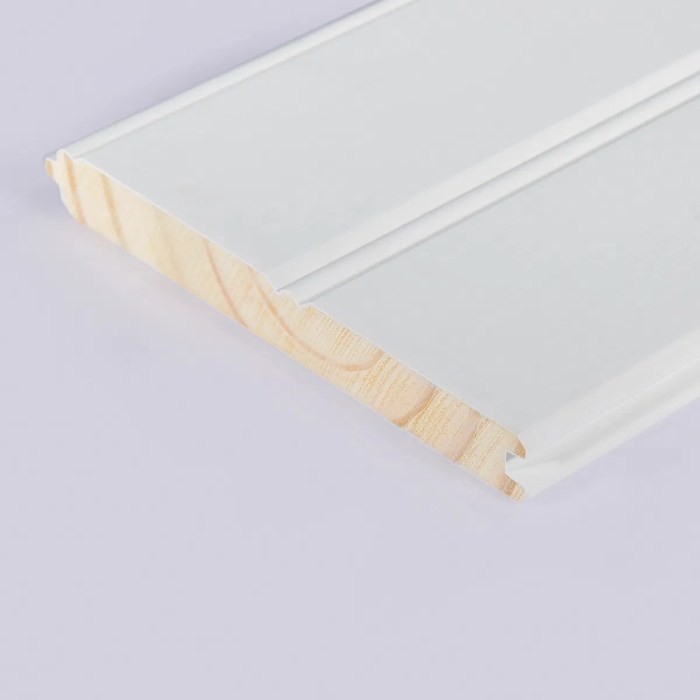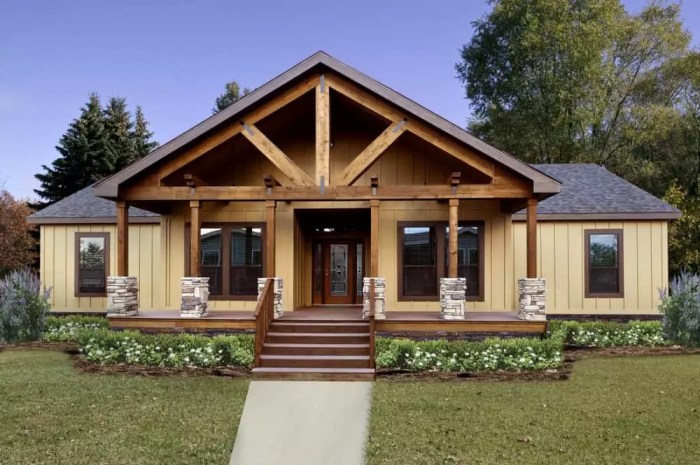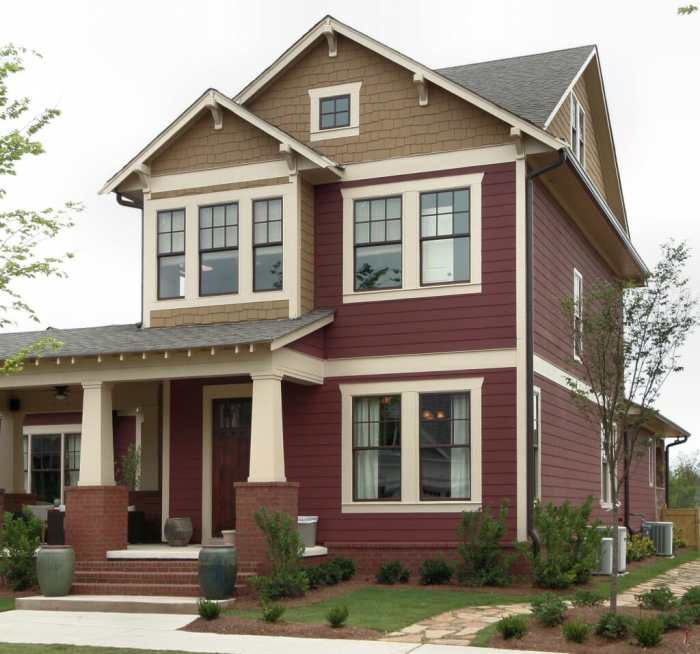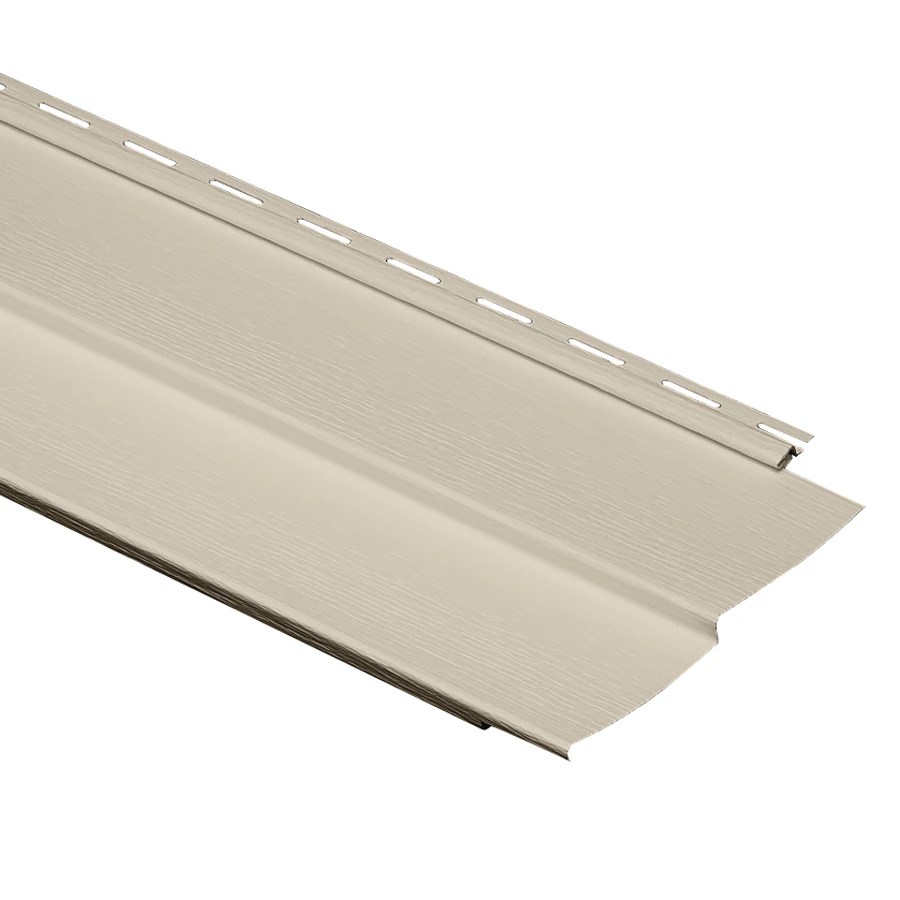Thinking about upgrading your home’s exterior? GenStone siding presents a compelling alternative to traditional materials. This comprehensive guide dives deep into everything you need to know, from material composition and installation to maintenance, cost, and warranty. We’ll unpack the pros and cons, helping you decide if GenStone is the right choice for your next home improvement project. Prepare to transform your curb appeal and potentially boost your property value.
We’ll explore the unique properties of GenStone, comparing it to vinyl and wood siding in terms of durability, environmental impact, and overall cost-effectiveness. Learn about the various styles and colors available, ensuring your new siding perfectly complements your home’s architecture. We’ll also cover the installation process, maintenance tips, and what to expect from the warranty, providing you with all the information necessary to make an informed decision.
GenStone Siding Material Composition
GenStone siding offers a compelling alternative to traditional siding materials, boasting a unique blend of aesthetics and durability. Understanding its composition is crucial for homeowners considering this option, as it directly impacts longevity, maintenance, and environmental footprint. Let’s delve into the specifics of what makes GenStone tick.
GenStone siding is primarily composed of a high-density concrete mixture, reinforced with polymers and other proprietary additives. This concrete core provides the strength and structural integrity of the product. The surface is then meticulously crafted to mimic the appearance of natural stone, brick, or wood, using a process that involves molding and a carefully applied, high-quality finish. The exact composition varies slightly depending on the specific style and color chosen, but the core principle remains consistent: a durable, concrete-based material designed for long-lasting performance.
GenStone Siding Durability Compared to Other Materials
GenStone’s durability is a significant selling point. Compared to vinyl siding, GenStone offers superior resistance to impact damage, dents, and scratches. Vinyl, while relatively inexpensive, can be easily damaged by impacts from flying debris or accidental collisions. Wood siding, while aesthetically pleasing, is susceptible to rot, insect infestation, and requires regular maintenance including painting or staining. GenStone, on the other hand, resists these issues, demanding significantly less upkeep over its lifespan. The inherent strength of the concrete core provides exceptional protection against the elements and everyday wear and tear, resulting in a longer lifespan compared to both vinyl and wood.
Environmental Impact of GenStone Siding
The environmental impact of any building material is a critical consideration. GenStone’s production process involves the use of cement, a material with a known carbon footprint. However, GenStone’s manufacturers often utilize recycled materials in their concrete mix, mitigating the environmental impact to some extent. The longevity of GenStone siding reduces the frequency of replacement compared to shorter-lived materials like wood, potentially offsetting some of the initial carbon emissions associated with production. Disposal is another factor. While not readily biodegradable, GenStone is a durable and long-lasting material, reducing the overall need for frequent replacements and associated waste. The long lifespan ultimately contributes to a reduced overall environmental impact compared to materials that need more frequent replacements.
Weight and Thickness of GenStone Siding Options
The weight and thickness of GenStone siding can vary depending on the specific product line and style. Understanding these variations is important for planning installation and structural considerations.
| Product Line | Thickness (inches) | Approximate Weight per Square Foot (lbs) | Notes |
|---|---|---|---|
| GenStone Classic Stacked Stone | 1 | 7-8 | Variations exist depending on the specific stone profile. |
| GenStone Ledgestone | 1 | 6-7 | Lighter weight due to thinner profile. |
| GenStone Board & Batten | 0.75 – 1 | 6-8 | Weight varies depending on thickness selected. |
| GenStone Smooth Stacked Stone | 0.75 | 5-6 | Thinner profile results in lighter weight. |
GenStone Siding Installation Process
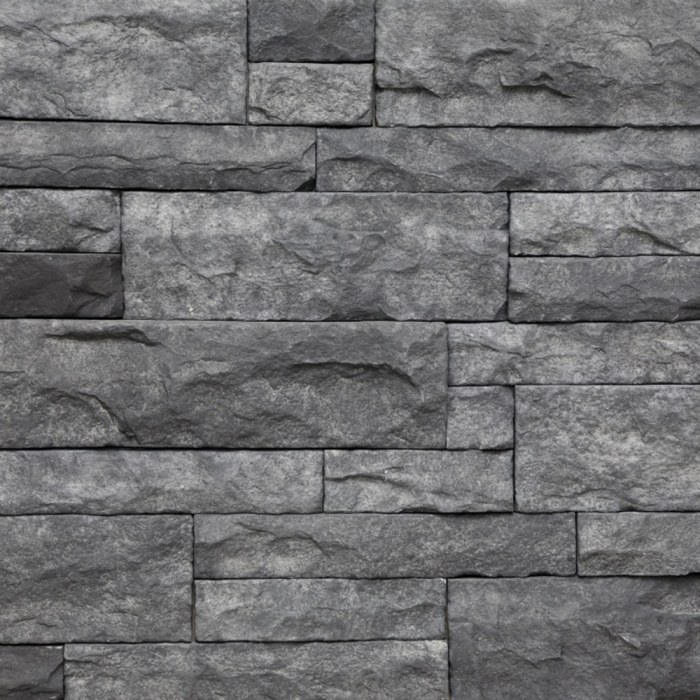
Installing GenStone siding can dramatically enhance your home’s curb appeal and protect it from the elements. This process, while seemingly complex, is manageable with careful planning and attention to detail. Following these steps will help you achieve a professional-looking result that will last for years. Remember, proper preparation is key to a successful installation.
Step-by-Step Installation Guide
The GenStone installation process involves several key steps, each crucial for a seamless and durable finish. First, you’ll need to prepare the surface, ensuring it’s clean, level, and free from any obstructions. Then, you’ll begin installing the starter course, followed by subsequent rows, meticulously aligning each piece. Finally, you’ll complete the installation by adding corner pieces and finishing trim. This methodical approach minimizes errors and ensures a professional outcome.
Tips and Tricks for a Professional Finish
Achieving a truly professional GenStone siding installation goes beyond simply following the steps. Utilizing a level at every stage is critical for maintaining straight lines and a consistent appearance. Pre-drilling pilot holes before fastening the panels prevents cracking and ensures a secure fit. Also, take your time and double-check your measurements; accuracy is paramount. Paying close attention to these details elevates the final product from merely adequate to truly exceptional.
Common Installation Mistakes and How to Avoid Them
Several common mistakes can hinder a successful GenStone installation. One frequent error is improper nailing, leading to loose panels and potential damage. This can be avoided by using the correct fasteners and following recommended spacing guidelines. Another common mistake is neglecting to account for expansion and contraction. GenStone, like any other exterior cladding, expands and contracts with temperature changes. Leaving insufficient space can cause buckling or warping. Careful planning and adherence to manufacturer’s instructions are vital to prevent these issues.
Necessary Tools and Materials
Proper preparation is crucial for a smooth installation. Gathering all necessary tools and materials beforehand saves time and frustration.
- Measuring tape
- Level
- Drill with appropriate drill bits
- Safety glasses
- Work gloves
- Caulk gun
- Hammer
- Utility knife
- GenStone siding panels
- Fasteners (nails or screws)
- Starter strips
- J-channel
- Corner trim
- Caulk
Having all these materials readily available ensures a seamless and efficient installation process. Remember to always consult the manufacturer’s instructions for specific requirements and recommendations.
GenStone Siding Maintenance and Cleaning
GenStone siding, known for its durability and low-maintenance nature, still requires periodic care to maintain its beauty and longevity. Proper cleaning and timely repairs can prevent significant problems down the line, saving you both time and money. This section details the best practices for keeping your GenStone siding looking its best for years to come.
Recommended Cleaning Methods for GenStone Siding
Regular cleaning is crucial for preventing dirt, grime, and other debris from accumulating on your GenStone siding. A simple solution of mild detergent and water, applied with a soft-bristled brush, is usually sufficient for routine cleaning. For more stubborn stains, a pressure washer can be effective, but it’s vital to use a low-pressure setting to avoid damaging the siding’s surface. Always rinse thoroughly with clean water afterward to remove any residual cleaning solution. Avoid abrasive cleaners or harsh chemicals, as these can scratch or dull the finish of your GenStone siding. Consider the weather conditions; avoid cleaning during extreme heat or cold, and always allow the siding to dry completely before applying any sealants or coatings.
Repairing Minor Damage to GenStone Siding
While GenStone siding is robust, minor damage, such as chips or cracks, can occur. For small imperfections, a high-quality exterior-grade caulk in a color matching your siding can effectively seal the damaged area and prevent further deterioration. Larger damage, such as significant cracks or broken pieces, may require professional repair or replacement. It’s important to address any damage promptly to prevent water penetration and potential structural issues. A small investment in timely repairs can save you from costly replacements in the future. Remember to always follow the manufacturer’s recommendations for repair materials and techniques.
Preventing Mold and Mildew Growth on GenStone Siding
Mold and mildew thrive in damp environments. Regular cleaning, as previously described, is the first line of defense against these unsightly and potentially harmful growths. Proper ventilation around your home is also critical; ensure that gutters and downspouts are clear and functioning correctly to prevent water from pooling against your siding. Consider trimming overhanging branches that might retain moisture against the siding’s surface. For existing mold or mildew, a solution of bleach and water (always following safety precautions and manufacturer’s guidelines) can be effective, but thorough rinsing is essential. In case of extensive mold or mildew growth, professional cleaning might be necessary.
GenStone Siding Maintenance Checklist
A regular maintenance schedule is key to prolonging the life of your GenStone siding. The following checklist Artikels recommended tasks and their frequency:
- Annual Inspection: A thorough visual inspection for any damage, loose pieces, or signs of mold or mildew.
- Spring Cleaning: A gentle cleaning with a soft-bristled brush and mild detergent solution to remove accumulated dirt and debris.
- Fall Cleaning: A second cleaning to remove leaves, twigs, and other debris accumulated throughout the year. This is particularly important to prevent moisture buildup during winter months.
- Gutter and Downspout Maintenance: Regular cleaning to ensure proper water drainage and prevent water damage to the siding.
- Repair of Minor Damage: Addressing any chips, cracks, or other minor damage promptly using appropriate repair materials.
GenStone Siding Styles and Colors

GenStone offers a diverse range of siding styles and colors designed to complement various architectural styles and personal preferences. Understanding the available options and their aesthetic impact is crucial for homeowners seeking to enhance their curb appeal and property value. The selection process should consider not only personal taste but also the overall architectural style of the home and the surrounding landscape.
GenStone’s extensive color palette and stylistic choices allow for remarkable versatility. This contrasts sharply with some traditional siding materials, which offer limited options in terms of both color and texture. The ability to mimic the look of natural stone, wood, or brick without the associated maintenance burdens is a key selling point.
GenStone Siding Styles
The diverse range of GenStone siding styles provides homeowners with the ability to achieve a wide variety of aesthetic looks. The realistic textures and patterns available closely replicate the appearance of natural materials, creating a sophisticated and high-end appearance.
For instance, the “Ledgestone” style offers a rugged, natural look reminiscent of stacked stone, ideal for rustic or craftsman-style homes. Conversely, the “Board & Batten” style provides a cleaner, more traditional aesthetic, often preferred for colonial or farmhouse designs. Other styles might include options mimicking smooth-faced stone, or even more modern interpretations of stone cladding. The choice depends heavily on the homeowner’s desired look and feel.
GenStone Siding Color Options
GenStone offers a broad spectrum of colors, catering to diverse tastes and architectural styles. The color selection process should consider factors such as the home’s location, the surrounding landscape, and the overall design scheme. Understanding the impact of color on the perceived size and warmth of the house is essential for a cohesive and visually appealing result.
Colors range from warm earth tones like browns, tans, and creams, ideal for creating a sense of rustic charm, to cooler shades of gray, blue, and even black, which can provide a modern or contemporary feel. Certain colors can even help accentuate specific architectural features, while others can create a more subtle and understated look. The company often provides color swatches and virtual visualization tools to help homeowners make informed decisions.
GenStone Siding and Architectural Styles
The application of GenStone siding varies significantly depending on the architectural style of the house. Careful consideration should be given to how the chosen style and color complement the existing features of the home, such as windows, roofing, and landscaping. A poorly chosen siding can detract from the overall aesthetic, while a well-chosen one can significantly enhance it.
For example, a Victorian home might be beautifully complemented by GenStone siding in a dark, rich brown or deep gray, mimicking the look of aged stone. This would contrast nicely with the ornate detailing typically found on such homes. In contrast, a modern minimalist home might benefit from a sleek, light gray or white GenStone siding to maintain a clean, contemporary feel. A ranch-style home could utilize the Board & Batten style for a classic, updated look.
Visual Representations of GenStone Siding Applications
Imagine a charming Cape Cod-style home, painted white with black shutters. The GenStone siding, in a light gray mimicking smooth stone, is used as an accent around the base of the home, creating a clean, defined line that contrasts beautifully with the white clapboard. The overall effect is one of understated elegance.
Now picture a sprawling ranch-style house, its long, horizontal lines emphasized by GenStone siding in a warm, earthy brown, replicating the look of stacked stone. The texture of the siding adds depth and visual interest, creating a rustic, welcoming feel. The brown complements the natural surroundings, creating a harmonious blend between the house and its environment.
Finally, envision a contemporary home with sharp angles and large windows. The GenStone siding, in a sleek, charcoal gray, is used to clad the entire exterior, creating a bold, modern statement. The smooth, almost seamless look of the siding enhances the home’s clean lines and minimalist aesthetic. The dark gray provides a striking contrast against the bright windows and the surrounding landscaping.
GenStone Siding Cost and Value

Choosing the right siding for your home is a significant investment, impacting both aesthetics and long-term costs. GenStone, with its blend of durability and attractive appearance, presents a compelling option. Understanding the cost factors and comparing it to alternatives is crucial for making an informed decision. This section delves into the financial aspects of GenStone siding, examining its upfront costs, long-term value, and potential return on investment.
GenStone Siding Cost Factors
Several factors influence the overall cost of GenStone siding installation. The project’s total expense depends on a combination of material costs, labor charges, and the complexity of the installation. Material costs are directly tied to the size of your home and the chosen style and color of the siding. Labor costs vary depending on your location, the installer’s experience, and the intricacy of the project, such as the presence of architectural details or difficult-to-access areas. Permitting fees and any necessary preparation work, like removing existing siding, also contribute to the final price. Unexpected issues during installation can also increase costs. For instance, significant underlying damage to the house’s exterior might require additional repairs before siding can be installed.
Comparison with Other Siding Materials
GenStone’s cost-effectiveness is best understood when compared to other popular siding options like vinyl, wood, and fiber cement. While vinyl siding typically has a lower initial cost, it may require more frequent replacements due to its susceptibility to damage. Wood siding, known for its aesthetic appeal, comes with a higher price tag and demands significant ongoing maintenance to prevent rot and insect infestation. Fiber cement siding offers durability comparable to GenStone but often carries a higher upfront cost. GenStone’s strength, low maintenance requirements, and longevity make it a strong contender in the long-term cost-effectiveness race. Consider the total cost of ownership, factoring in initial purchase, installation, maintenance, and potential lifespan, when making a comparison. For example, a home requiring siding replacement every 15 years versus one lasting 30+ years presents a significant difference in overall cost.
Property Value Increase
Installing high-quality siding, such as GenStone, can significantly boost your home’s curb appeal and market value. A well-maintained exterior is a key factor for potential buyers. GenStone’s realistic stone appearance enhances the aesthetic value, potentially commanding a higher sale price compared to homes with less visually appealing siding. The return on investment can be substantial, especially in competitive real estate markets. Real estate agents often cite upgraded exterior features, like siding, as a significant factor influencing a home’s appraisal value. The precise increase varies depending on factors such as location, home size, and overall market conditions. However, the improved curb appeal and durability contribute to a positive impact on property value.
Estimated GenStone Siding Installation Costs
The table below provides estimated costs for GenStone siding installation, considering various house sizes. These figures are approximate and should be considered as a starting point for budgeting. Actual costs may vary depending on factors discussed previously. It’s always recommended to obtain multiple quotes from reputable installers in your area for a more precise estimate.
| House Size (sq ft) | Material Cost (Estimate) | Labor Cost (Estimate) | Total Estimated Cost |
|---|---|---|---|
| 1500 | $8,000 – $12,000 | $5,000 – $8,000 | $13,000 – $20,000 |
| 2000 | $10,000 – $15,000 | $6,000 – $10,000 | $16,000 – $25,000 |
| 2500 | $12,000 – $18,000 | $7,000 – $12,000 | $19,000 – $30,000 |
| 3000 | $14,000 – $21,000 | $8,000 – $14,000 | $22,000 – $35,000 |
GenStone Siding Warranty and Customer Support
Choosing exterior siding is a significant investment, and understanding the warranty and customer support offered by the manufacturer is crucial. GenStone, a popular choice for its stone-like appearance and durability, provides a warranty to protect your investment. However, the specifics of the warranty and the quality of customer support can vary, so it’s essential to understand what’s covered and what to expect. This section will delve into the details of GenStone’s warranty and customer support experience.
GenStone Siding Warranty Coverage
GenStone siding warranties typically cover defects in materials and workmanship. The exact length and specifics of the warranty can vary depending on the specific product line and the retailer where it was purchased. Some warranties may cover only manufacturing defects, while others might offer broader protection against damage or fading. It’s absolutely vital to carefully read the warranty document provided with your purchase. This document will detail the length of the warranty, what is and isn’t covered, and the process for filing a claim. For example, a common warranty might cover defects for a period of 5-10 years, but this is not universally applicable. Always consult your specific warranty paperwork.
Customer Experiences with GenStone Siding Warranty Claims
Customer experiences with GenStone warranty claims are varied. While many report positive experiences with quick and efficient resolutions, others have described challenges in getting claims processed or receiving satisfactory compensation. Online forums and review sites often contain anecdotal evidence of both positive and negative experiences. For instance, some customers have reported easy replacements for damaged panels, while others have encountered difficulties in proving the damage was a manufacturing defect rather than installation error. These discrepancies highlight the importance of meticulously documenting the installation process and any initial concerns about the siding. Clear photographic evidence of defects is also crucial in expediting the claims process.
GenStone Customer Support Availability and Responsiveness
GenStone’s customer support channels may include phone, email, and online forms. The responsiveness of the customer support team can vary depending on the volume of inquiries and the specific issue. Some customers report quick and helpful responses, while others have described lengthy wait times or difficulty reaching a representative. Proactive communication, including clearly documenting the problem and providing all relevant information, can significantly improve the chances of a swift and satisfactory resolution. It’s advisable to keep records of all communication with customer support, including dates, times, and the names of the representatives you speak with.
Frequently Asked Questions Regarding GenStone Siding Warranties
Understanding the warranty is key to protecting your investment. Here are some common questions regarding GenStone siding warranties:
- What does the GenStone warranty cover? The warranty typically covers defects in materials and workmanship, but the specific details vary by product and retailer. Always refer to your specific warranty document.
- How long does the GenStone warranty last? The warranty period varies, typically ranging from 5 to 10 years, but specific terms are Artikeld in the individual warranty document.
- What is the process for filing a warranty claim? The process usually involves contacting GenStone customer support, providing proof of purchase, and documenting the defect with photos or videos. Detailed instructions are typically included within the warranty documentation.
- What isn’t covered by the GenStone warranty? The warranty typically excludes damage caused by improper installation, normal wear and tear, acts of God, or damage caused by other factors outside of manufacturing defects.
- What if I have a dispute with GenStone regarding a warranty claim? If you are unable to resolve your issue through standard customer support channels, you may need to consider alternative dispute resolution methods, such as contacting the Better Business Bureau or pursuing legal action, if necessary.
Ultimately, choosing the right siding for your home is a significant investment. GenStone offers a blend of aesthetics, durability, and relatively low maintenance, making it a strong contender. By carefully weighing the factors discussed – material composition, installation process, maintenance requirements, cost, and warranty – you can confidently determine if GenStone siding aligns with your needs and budget. Remember to always consult with professionals for accurate cost estimations and installation guidance, ensuring a smooth and successful renovation.
FAQ Corner
Can GenStone siding withstand extreme weather conditions?
GenStone is designed to resist a wide range of weather conditions, including heavy rain, snow, and strong winds. However, the specific performance will depend on proper installation and the chosen product line.
Is GenStone siding fire-resistant?
While GenStone is not inherently fireproof, it’s designed to meet or exceed building codes related to fire resistance. Check specific product specifications for detailed fire-rating information.
How long does GenStone siding typically last?
With proper installation and maintenance, GenStone siding can last for decades, significantly longer than some other siding materials.
Does GenStone siding require special cleaning products?
Generally, mild soap and water are sufficient for cleaning GenStone siding. Avoid abrasive cleaners that could damage the surface.
Can I install GenStone siding myself?
While DIY installation is possible, it’s often recommended to hire professional installers to ensure proper installation and avoid potential warranty issues.
